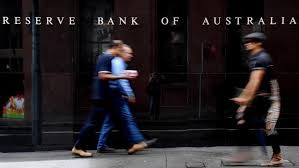Interest rates, wages and inflation
Written and accurate as at: Jul 27, 2017 Current Stats & Facts

Yesterday I found myself sitting amongst Australia’s key economic commentators listening to Dr Phillip Lowe the Governor of the Reserve Bank of Australia. The Governor gave a relatively short, but concise and meaningful speech addressing us on the key issues that are at the fore front of everyone minds. I found Dr Lowe to be frank, transparent and direct – which was a welcome surprise. He spoke interest rates, employment and inflation and did not hold back! Here are the key points I took away from an extremely insightful and engaging presentation.
- Australia’s labour market is represented by over 80% of people working in the services sector with only 8% working in the manufacturing sector.
- Increases in income/wages are at an historically low 1.9% (per annum) and is likely to stay for the long term. Dr Lowe made it very clear that this is a fundamental problem and further stated that a pickup in wages is essential for Australia’s economic growth as it is both holding back household spending and increasing the time for people to repay their debt.
- Dr Lowe pointed out that an increase in part-time work, technology and global competition were key factors in keeping wages down.
- Part-time hours now make up 33% of all employees which is a staggering increase from only 10% back in 1975. Furthermore, increases in part-time work continues to grow at 3% per annum whilst full time employment grows at less than 1% per annum.
- Some of the reasons for the spike in part-time employment is people studying, choosing to work less hours or caring for others. However, others cited job requirements and their inability to find full-time work.
- Inflation (price increases) remains below target and continues to plague growth in the Australian economy.
- The Australian economy is in a rare situation where the rate of unemployment and wage growth are both very low.
- Household debt is very high and rising faster than the unusually slow growth in income.
- Elsewhere in the world, some key central banks are beginning to increase interest rates whilst Australia doesn’t need to move in lockstep - inferring rates are likely to remain lower for longer.
- The neutral cash rate (The normal/average rate set by the RBA) has historically been at around 5.5% but is likely to be closer to 3.5% which is still significantly higher than the presiding cash rate of 1.5% yet a significant change in long term economic characteristics.
In summary, it seems that the Australian economy is amid a significant transition which the landscape as we previously knew will no longer be. The likely scenario is lower interest rates, increased part-time work, lower wages and therefore inflation for the foreseeable future.










